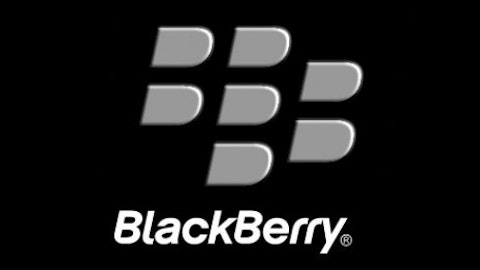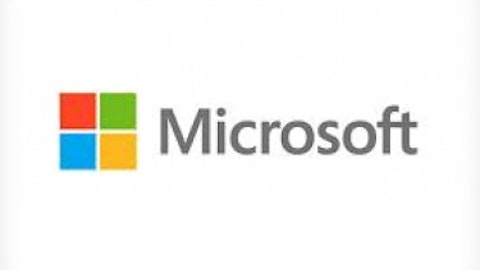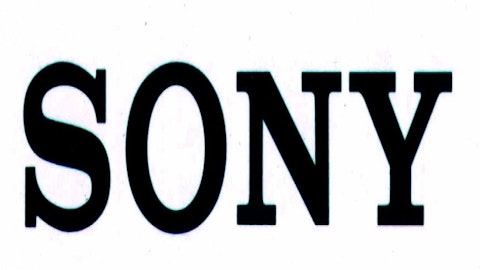Sony Corporation (ADR) (NYSE:SNE) unveiled the Playstation 4 to a warm and enthusiastic reception at the Electronic Entertainment Expo while the reception for Xbox One was noticeably lower key. With hardware capability roughly comparable to Xbox One, Sony created a competitive edge by exploiting Microsoft Corporation (NASDAQ:MSFT)’s digital rights management (DRM) mis-steps.
Antagonizing the community
Microsoft had chosen XBox One (XB1) to introduce the most restrictive game DRM system yet for consoles, and this antagonized many in the gaming community. Your XB1 doesn’t have to be connected to the Internet all the time, but you have to check in with Father Microsoft once a day.
Microsoft Corporation (NASDAQ:MSFT) had publicized these and other restrictions on selling or trading used games prior to E3, so Sony Corporation (ADR) (NYSE:SNE) saw its opportunity. At Sony’s press conference they announced a policy of zero restrictions on used games as well as no requirement for Internet connection to play single player games. Combined with undercutting XB1 by $100 at $399, Sony’s coup was complete.
The vast majority of articles written about the E3 tussle between Sony Corporation (ADR) (NYSE:SNE) and Microsoft draw the same conclusion of Forbes writer Paul Tassi in his article “PS4’s Price and Policies Humiliate Microsoft’s Xbox One at E3.” Informal online opinion polls also seem to confirm the anti-Microsoft sentiment. IGN’s “Who is Winning E3?” poll showed Sony ahead 80.9% to Microsoft Corporation (NASDAQ:MSFT)’s 12.3%. An LA Times poll asked which console “Are you most likely to buy” and PS4 won 63.4% to XB1 at 27.3%.
It’s too bad that Microsoft has shot itself in the foot this way, since the XB1 offers some technical advantages. After seeing the PS4, I consider the XB1 hardware and software to be better integrated, since the XB1 operating system is derived from Windows 8. XB1 offers a broader range of non-gaming services and capabilities. As I indicated in my article “Microsoft’s Most Important Hardware” I liked the fact that XB1 was basically a Windows 8 PC that could serve as the center of a multi-mode home entertainment system.
To achieve this multimode role, Xbox Kinect was really essential, since it provides convenient gesture control of the Windows 8 style home screen. But it’s apparent that most gamers really don’t want Kinect and really don’t like having to pay the extra $100 dollars for it. Sony Corporation (ADR) (NYSE:SNE)’s decision to make their own Kinect-like sensor an optional accessory appears to be, once again, intelligent marketing based on understanding their core constituency.
Moving beyond the core
Microsoft Corporation (NASDAQ:MSFT) clearly wants to move beyond the core gamer and has positioned XB1 to serve a broader range of interests and provide a broader range of entertainment. In that context, is it really so painful to require that XB1 be always connected to the Internet? Once that ethernet cable is connected to the back of the console, either console, it’s unlikely to get disconnected.
Plus, Microsoft revealed at E3 that there’s an even more important role for their cloud services than providing on-line stores for games and movies. Game developers will be able to use Microsoft’s cloud servers to perform AI computations and run environment simulations that would be beyond the capability of the console. Game developers will be able to endow game characters with more smarts, and advance timelines in games even when they’re not being played.
XB1 game DRM will probably continue to be a sticking point with gamers, however, as Microsoft Corporation (NASDAQ:MSFT) is just acceding to the wishes of the Game Industry. Developers don’t like the lost revenue from uncontrolled trading and reselling of used games. Microsoft is offering to host a trading and gift system for used games, but I doubt this will satisfy many people.
Game developers will be more attracted to a platform with secure DRM, just as mobile app developers are attracted to iOS for the same reason. The greater availability of high value games may overcome the resistance of gamers to the DRM system. Market forces will decide this one. If Microsoft decides that their DRM system is keeping XB1 from meeting their sales expectations, they’ll make the necessary adjustments.
The 10,000 foot view
Let me zoom out from the Microsoft Corporation (NASDAQ:MSFT) vs. Sony battle to offer some observations about the current state of the gaming business. I was surprised to read this very gloomy characterization of the gaming industry by fellow Foolish blogger Leo Sun:
“When I think of the current state of the video game industry, which is characterized by declining hardware and software sales being propped up by endless refreshes of tired franchises, I like to reminisce about the good ol’ days of gaming, when video games resembled games more than Hollywood movies.”
I find I have no such nostalgia for the good ol’ days of gaming and in fact look forward to future games resembling Hollywood movies even more. As a story-telling medium, the cinematic role playing game is still in its infancy, just as motion pictures were a century ago. In those early movies, stories and characters were shallow by today’s standards, as movie makers focused on mastering the technical challenges of their new medium.
Current game designers are still contending with the challenges of their medium like the early film makers, so stories and characters have taken a back seat to the technical aspects. This is starting to change, and we saw plenty evidence of this in the game announcements that accompanied the new consoles. More games are being produced that allow completely free roaming by the player in their virtual worlds. Story lines are increasingly non-linear, another break from the past which is also difficult to master.
Far from being endless refreshes of tired franchises, what E3 offered was exciting new games with spectacularly detailed physics modeling and image rendering, combined with interesting story lines. Even the acting is getting better. One game, Beyond Two Souls, features the voice and on-screen avatar of Willem Dafoe.
The game industry has been in the financial doldrums because of the long time since the last generation of consoles was introduced, while PC gaming rigs were beyond the reach of many who could otherwise afford a $400-500 console. Having a new generation of high performance consoles will release pent up demand and spur purchases of game content. Once both Sony Corporation (ADR) (NYSE:SNE) and Microsoft start delivering the new consoles in quantities, 10 million consoles per quarter between them is quite realistic.
The passion with which gamers have reacted to the new consoles, whether negative or positive, shows how important this new digital entertainment industry is.
Mark Hibben has no position in any stocks mentioned. The Motley Fool owns shares of Microsoft Corporation (NASDAQ:MSFT).
The article Sony and Microsoft Battle for Hearts and Minds at E3 originally appeared on Fool.com.
Mark is a member of The Motley Fool Blog Network — entries represent the personal opinion of the blogger and are not formally edited.
Copyright © 1995 – 2013 The Motley Fool, LLC. All rights reserved. The Motley Fool has a disclosure policy.





